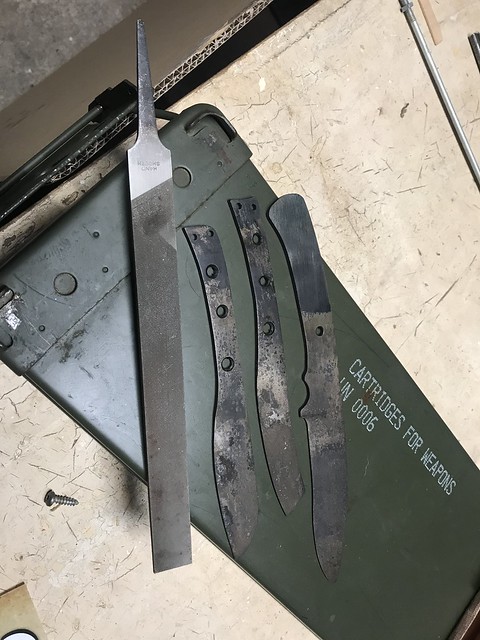AKS’ site has this for HT: (link posted above)
Austenitize: Heat to 1545°-1615° and hold for 5 minutes. Quench in oil.
Temper: Temper twice for two hours each time. Use the table below to achieve desired hardness. (On site)
I found a few threads on here that corroborated so I used this process this afternoon, and unfortunately my blades failed a file test post temper.
I was using a two-brick forge, heated the blades to non-magnetic (tested both), soaked for at least 5min. (Used a timer, though the blades may have been up to temp before the timer was started), quenched in heated canola oil (quench tank was 2ft from forge, oil was heated by scrap metal pieces being heated and placed inside before heating the work pieces, unsure of the exact temp of the oil but I measured it at around 140f just before quench), wiped down with paper towel and placed in 400f oven - twice for two hours with a cold water rinse after each temper.
The blades are 5-6” x ~1” x 1/8”
Any suggestions as to what went wrong?


